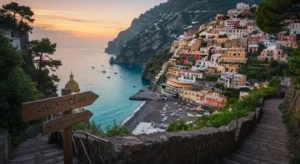Table of Contents
Your First Indonesia Vacation: The Ultimate Beginner’s Guide
Picture this: the scent of frangipani blossoms on a warm breeze, the distant call to prayer mingling with the sound of crashing waves, and a smile from a local that feels genuinely welcoming. This isn’t just a travel poster; this is the everyday magic of Indonesia. If you’ve been dreaming of an Indonesia vacation but feel a little overwhelmed by where to even start, you’ve landed in the right place.
I remember my first time planning a trip there. Staring at a map of this sprawling archipelago of over 17,000 islands, I had so many questions. Should I just stay in Bali? Is it safe? How do I get around? It’s a common feeling. Indonesia is vast, but unlocking its treasures is easier than you think. This guide is designed to cut through the noise and give you the confidence to plan an unforgettable adventure, tailored perfectly for a first-time visitor. Let’s turn that overwhelm into excitement.
Why Indonesia Should Be Your Next Destination
You’ve probably seen the iconic images of Bali’s rice terraces. But Indonesia is so much more than one island. Think of it as a whole continent packed into a paradise setting.
- Unmatched Diversity: From the spiritual heart of Bali and the ancient temples of Java to the dragon-inhabited island of Komodo and the jungles of Sumatra, each region offers a completely different experience. You can surf world-class waves, hike active volcanoes at sunrise, dive in some of the planet’s richest marine biodiversity, or simply find a quiet stretch of sand to call your own.
- Incredible Value: Your money goes a long way here. A delicious local meal can cost just a couple of dollars, and comfortable, clean accommodation is remarkably affordable. This makes it an ideal destination for beginners and seasoned travelers alike who want a luxurious-feeling trip without a sky-high budget.
- The Warmth of the People: The official national motto is “Bhinneka Tunggal Ika,” which means “Unity in Diversity.” You’ll feel this in the genuine hospitality of the Indonesian people. Their kindness and willingness to help, even with a language barrier, is often what visitors remember most.
Planning Your Trip: The When, The Where, and The How
A little planning goes a long way in ensuring a smooth trip. Let’s break down the essentials.
When to Go: Decoding the Seasons
Indonesia has a tropical climate, meaning it’s warm year-round. However, it has two main seasons:
- Dry Season (April – October): This is considered the best time to visit for most activities, especially beach-going, hiking, and diving. The skies are generally clear, and rainfall is minimal. July and August are the peak tourist months, so expect more crowds and higher prices.
- Rainy Season (November – March): Don’t write this season off! The rain usually comes in short, heavy bursts, often in the afternoon, leaving the rest of the day sunny and lush. It’s a fantastic time to visit if you prefer fewer crowds and don’t mind the occasional tropical downpour.
My advice? The shoulder months of April, May, June, and September are the sweet spot. You get the beautiful dry season weather without the peak-season crowds.
Crafting Your Indonesia Itinerary: A Beginner-Friendly Approach
Trying to see everything in one trip is the biggest mistake a first-timer can make. Distances are vast, and travel between islands takes time. Instead, focus on one or two regions.
Option 1: The Classic Bali & Beyond Trip (7-10 Days)
This is the perfect introduction. Bali is the most tourist-friendly island, with excellent infrastructure.
- Ubud (3-4 days): Immerse yourself in culture. Explore the Sacred Monkey Forest, walk through the Tegallalang Rice Terraces, take a cooking class, and soak in the tranquil, spiritual vibe.
- South Bali (3-4 days): Experience the beach life. Areas like Seminyak and Canggu offer great cafes, boutiques, and sunset beach clubs. For a quieter vibe, consider Sanur or Nusa Dua.
- Island Hop (2-3 days): Take a short boat trip to the Nusa Islands (Nusa Lembongan, Ceningan, Penida) for stunning cliffs and incredible snorkeling, or to the Gili Islands for crystal-clear water and a car-free paradise.
Option 2: The Culture & Adventure Seeker (10-14 Days)
Ready for a bit more? Combine Bali with a flight to neighboring Java.
- Yogyakarta (3 days): The cultural soul of Java. Here you can visit the breathtaking Borobudur, the world’s largest Buddhist temple, at sunrise, and the equally impressive Hindu temple complex of Prambanan.
- Mount Bromo (2 days): Take a pre-dawn jeep ride across the “Sea of Sand” to watch the sun illuminate this active volcano. It’s a truly epic experience.
- Bali (5-7 days): Use Bali as your base for relaxation and exploration before and after your Java adventure.
Navigating the Logistics: Visas, Money, and Getting Around
- Visas: Good news! Citizens of many countries (including the US, UK, Australia, Canada, and most of Europe) receive a Visa on Arrival (VoA) for tourism. This is typically valid for 30 days and can be extended once for another 30 days. You can pay for the VoA at designated counters at major international airports. Always double-check the latest requirements on the official Indonesian immigration website before you travel.
- Money: The local currency is the Indonesian Rupiah (IDR). You’ll see prices in the hundreds of thousands and even millions—don’t panic! It’s best to carry a mix of cash (for local markets and small warungs) and a credit/debit card (for larger hotels and restaurants). ATMs are widely available in cities and tourist areas.
- Getting Around: For short trips, ride-hailing apps like Gojek and Grab are absolute lifesavers. They work like Uber for both cars and motorbike taxis (ojek). For longer distances on an island, hiring a private driver for the day is surprisingly affordable and very convenient. Inter-island travel is best done by plane with local carriers like Garuda Indonesia, Lion Air, or AirAsia.
Embracing the Culture: Going Beyond the Guidebook
To truly enjoy your Indonesia vacation, understanding a few cultural nuances will enrich your experience.
- Dress Modestly: While beachwear is fine at the pool or beach, when visiting temples, rural villages, or even just walking around town, it’s respectful to cover your shoulders and knees. A simple sarong is a versatile item to carry.
- A Note on Religion: Indonesia is the world’s largest Muslim-majority nation, but Hinduism is dominant in Bali. You’ll hear the beautiful call to prayer in many areas and see daily offerings (canang sari) on the streets in Bali. Be respectful, especially during Ramadan.
- Use Your Right Hand: The left hand is considered unclean. Always use your right hand for giving or receiving money, shaking hands, or eating.
A Taste of Indonesia: What to Eat
The food is a highlight. Don’t just stick to Western menus!
- Nasi Goreng: The iconic Indonesian fried rice. A perfect breakfast, lunch, or dinner.
- Mie Goreng: Its noodle-based counterpart, equally delicious.
- Sate (Satay): Skewers of grilled meat with a rich peanut sauce.
- Gado-Gado: A wonderful vegetable salad with a savory peanut sauce dressing.
- Nasi Campur: Meaning “mixed rice,” this is the best way to try a little bit of everything. You get a plate of rice and choose from a variety of meats, vegetables, and sauces.
Frequently Asked Questions (FAQs)
Q: Is Indonesia safe for first-time travelers?
A: Absolutely. Indonesia is generally a very safe country for tourists. Petty crime like pickpocketing can occur in crowded tourist areas, so exercise the same common sense you would anywhere else: keep an eye on your belongings and don’t flash expensive jewelry. The biggest risks are typically related to traffic and natural elements (strong ocean currents, sun exposure), so be cautious when riding scooters and always heed local warnings about swimming conditions.
Q: What should I pack for my Indonesia vacation?
A: Think light, breathable clothing (linen, cotton), a rain jacket (especially if traveling in the wet season), strong sunscreen and insect repellent, a universal power adapter, a reusable water bottle, and comfortable sandals. Most importantly, don’t forget a sarong for temple visits and a sense of adventure!
Q: Do I need to speak Bahasa Indonesia?
A: Not at all. In major tourist destinations, you’ll find that many people in the hospitality industry speak basic English. However, learning a few key phrases will go a long way and be greatly appreciated by locals. Try:
- Terima kasih (Thank you)
- Selamat pagi (Good morning)
- Halo (Hello)
- Berapa harganya? (How much is it?)
Q: Can I drink the tap water?
A: No, it’s not safe to drink tap water in Indonesia. Always drink bottled or filtered water. Many hotels and cafes provide free filtered water refill stations, which is a great way to reduce plastic waste.
Q: What’s a reliable source for more detailed information?
A: For official travel advisories and cultural information, the Indonesian Ministry of Tourism’s website, Wonderful Indonesia, is an excellent and authoritative resource to consult during your planning.
Your Adventure Awaits
An Indonesia vacation is more than just a holiday; it’s an immersion into a world of vibrant cultures, staggering natural beauty, and profound warmth. It’s the kind of place that gets under your skin and calls you back again and again. By starting with a focused plan, respecting the local customs, and keeping an open mind, you’re setting yourself up for a journey you’ll cherish for a lifetime.
The hardest part is taking that first step and booking the ticket. The rest? Well, that’s the adventure. So, what are you waiting for?
Disclaimer: Travel information, especially regarding visas and health protocols, can change frequently. Always check with official government sources and your local embassy before your trip to ensure you have the most current information.




